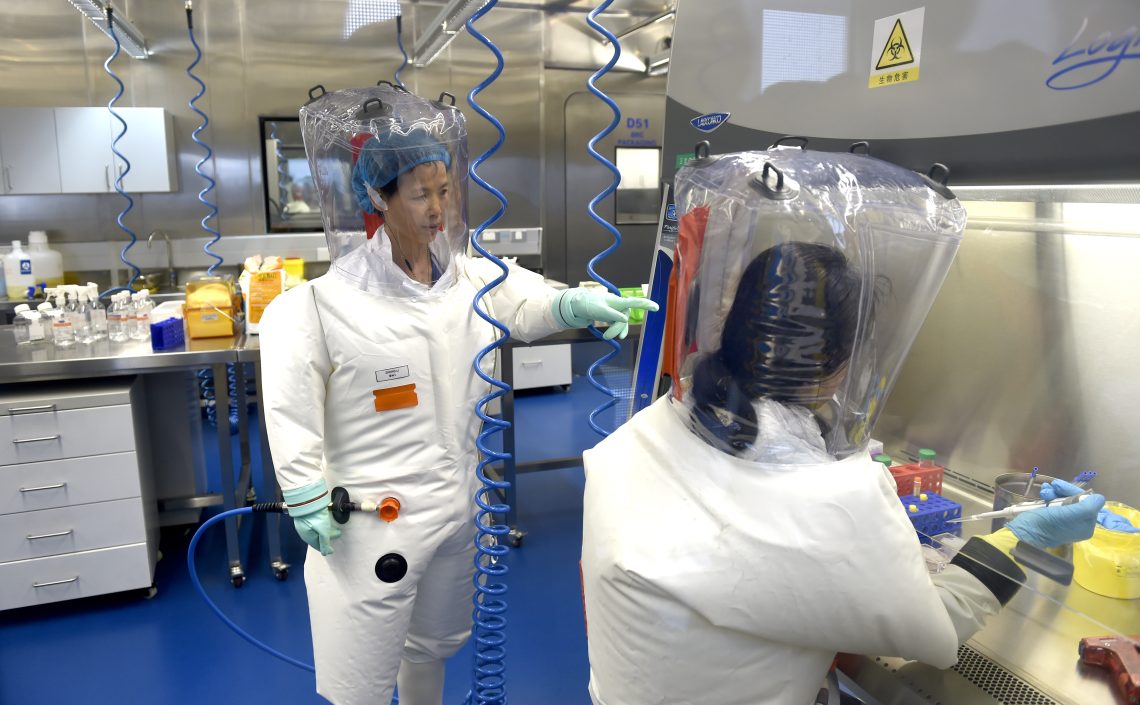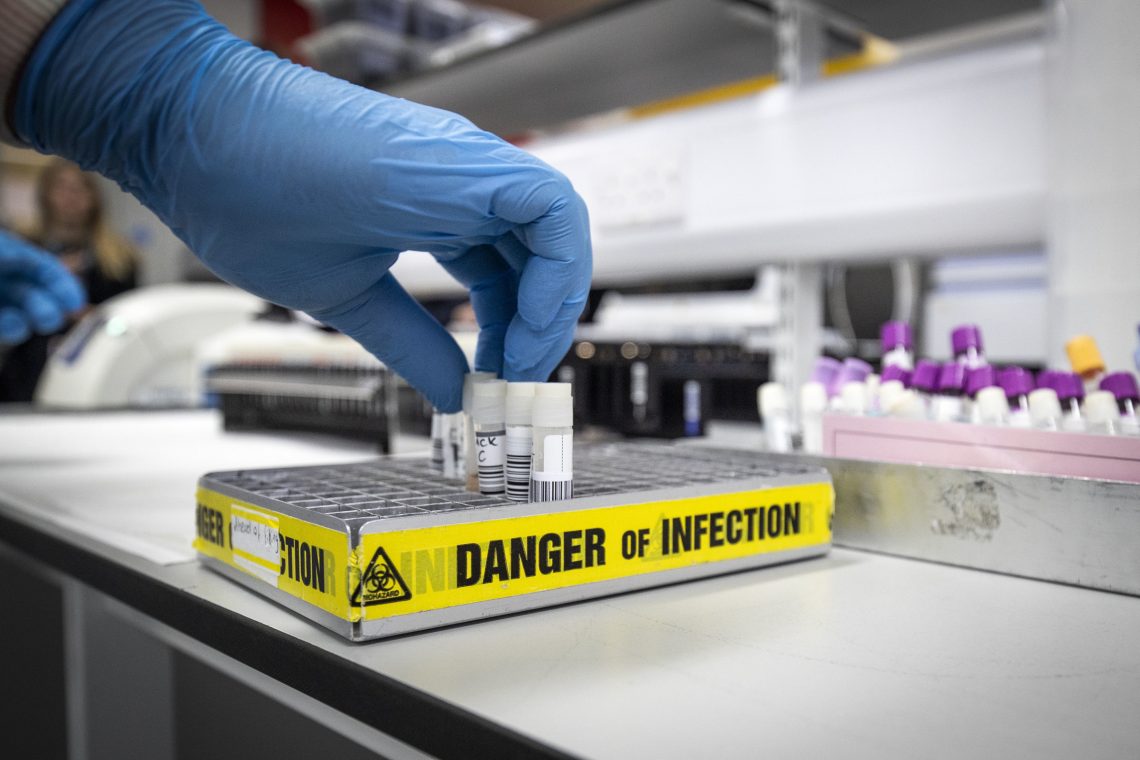The potential for a biolab-origin pandemic
Unless the international community can decisively learn the precise origins of Covid-19, measures to prevent another pandemic may be less successful.

In a nutshell
- The SARS-CoV-2 virus could have escaped from a Chinese laboratory
- More laboratories are becoming capable of handling dangerous pathogens
- A future release of a pandemic-capable pathogen remains a serious concern
With the origins of the SARS-CoV-2 virus, which causes Covid-19, still an unsettled issue among medical professionals, public health experts, intelligence analysts and politicians, there is rightful concern about a future pandemic.
The virus, which most likely originated in the central Chinese city of Wuhan, has taken the lives of nearly 7 million people and brought illness upon millions more across the globe since it became widely known in the fall of 2019.
There are several reasonable theories on the origins of the outbreak. One asserts that the virus may have escaped the confines of a laboratory such as the Wuhan Institute of Virology. A researcher working on the virus possibly became infected and then unwittingly carried the highly contagious pathogen into a densely populated urban environment, resulting in human-to-human transmission.
Another common theory is that the virus was transmitted in a zoonotic spillover event, in which there is direct animal-to-human transmission. One possible opportunity for this would be a commercial wet market that was known to have existed in Wuhan at the time of the outbreak and engaged in the sale of wildlife.
Of course, there are variations to these theories as well as other possibilities. Unfortunately, due to a lack of cooperation on the part of Chinese authorities, the true origins of the virus that causes Covid-19 may never be fully known to those outside of the highest levels of government of the People’s Republic of China. Without the necessary international investigations, supported by access to original sources and full transparency, the risk of another global pandemic on the scale of the Covid-19 pandemic is a striking – and frightening – possibility.
Also on the coronavirus
How China missed a chance to stop Covid
Biotechnology boom
Modern biotechnology in pursuit of advanced science, including medical breakthroughs, is without question one of the hallmarks of the 21st century. It has brought tremendous benefits to humankind in combatting disease and increasing longevity. Indeed, the rapid development of the American mRNA vaccine for Covid under Operation Warp Speed is a fitting example of the work of modern biotechnology and its ability to address today’s scientific and health challenges.
Another feature of modern biotechnology is that its academic, research, governmental and commercial pursuits are widespread, with public and private biotechnology research and development (R&D) institutions and laboratories spanning the globe. Much of the biotechnology work being done today by industry and governments generally carries little safety risk to public health. Activities include the benevolent development of vaccines, antibiotics, treatments for disease and medicines, among numerous others.
Despite well-intentioned efforts, the safety and security of biotechnology work across the globe are not guaranteed and could result in another costly or deadly local or regional outbreak, or global pandemic.

Biolab boom
There are three fundamental concerns regarding another pandemic: a natural, an accidental or a deliberate biological event. Considering recent concerns about the possible origins of the SARS-CoV-2 virus coming from a laboratory leak in China, let us focus on that possibility.
Many countries today have laboratories that deal with high-consequence pathogens. A recent report by King’s College London and George Mason University, Global BioLabs Report 2023 (GBR23), asserts that at least 69 biosafety level 4 (BSL-4) laboratories are in operation, under construction, or planned across 27 countries. According to the U.S. National Institute of Health, BSL-4 facilities are required for agents that “are associated with human disease and cause illness by spreading through the air (aerosol) or have an unknown cause of transmission [and] cause diseases that are usually life-threatening.”
These labs have the most stringent safety and security protocols to ensure that pathogens housed in these special facilities remain within their specified confines. Among other safety protocols, laboratory personnel may wear full-body, positive-pressure suits with an independent air supply for protection.
While many countries have ended their offensive biological weapons programs, there are concerns that some nations may not have.
According to GBR23, Europe has 26 BSL-4 laboratories, followed by Asia with 20, North America with 15, Oceania 4, Africa 3, and South America with 1. Sixty percent of these labs are government-run public health institutions. Twelve new BSL-4 labs have been planned in nine countries since the beginning of the pandemic. Strikingly, according to the GBR 23, three-quarters of the BSL-4 labs are located in urbanized areas (populations of 50,000+), which raises the risk of widespread contagion if a pathogen were to be released accidentally or deliberately into the surrounding environment.
The Wuhan Institute of Virology, for example, is in a city with a population of more than 10 million people. Wuhan is the most populous city in central China, a major transportation hub, and one of several Chinese megacities. Transmission of a virus in such an environment – and beyond – could be quite rapid. An additional concern: “The key trend is that the number of labs handling dangerous pathogens is rapidly increasing around the world, but the boom has not been accompanied by sufficient oversight, and this raises biosafety and biosecurity concerns,” Filippa Lentzos, an author of GBR23, commented.
In addition, there are 57 BSL-3+ laboratories globally that carry out risky biological work. Unfortunately, Ms. Lentzos added, many of the countries building new maximum containment laboratories “score poorly in bio-risk management.”
Bio bad actors
Another issue regarding scientific work on dangerous pathogens is the possible existence of military R&D programs for the development of offensive (i.e., military) biological weapons. This work would be kept from public scrutiny or oversight.
While the 1972 Biological Weapons Convention (BWC) bans the development, possession, stockpiling or use of biological weapons for offensive military purposes, including weapons and delivery systems, not all countries are signatories to the treaty or even, if a signatory, does not abide by it. Under the BWC, countries are allowed to conduct research on biological pathogens for public health or defensive military purposes in the instance that an opposing force might employ them in battle. But unlike some other arms control treaties such as nuclear agreements, the BWC has no verification or enforcement provisions. It is essentially an international agreement based on the honor system.
The possibility of another outbreak or pandemic from a laboratory is higher over time.
While many countries have ended their offensive biological weapons programs, there are concerns that some nations may not have and are involved in developing or stockpiling these weapons for potential use in a conflict. An offensive biological weapons program could include research on anthrax, ricin, smallpox or tularemia, among others. It could also include gain-of-function (GoF) research on other pathogens. (GoF research is purposed with changing the ability of a pathogen to spread or cause disease.) Indeed, there have been allegations that the Wuhan Institute of Virology, which may have ties to the Chinese People’s Liberation Army, was involved in GoF research on viruses, possibly including coronaviruses.
The U.S. State Department, in its unclassified Adherence to and Compliance with Arms Control, Nonproliferation, and Disarmament Agreements and Commitments report to the U.S. Congress, contends that some countries may have active biological weapons programs. For instance, the State Department report indicates concerns with China’s and Iran’s compliance with the BWC, while it assesses with greater certainty that Russia and North Korea have active offensive biological weapons programs.
The judgments are likely based on both open-source and intelligence collection and analysis. In addition, countries that may envision a potential conflict with any of these four countries are likely to have robust R&D programs to defend their populations and armed forces in a conflict.
Another possibility is the accidental or deliberate release of a high-consequence pathogen by a terrorist group. Terrorist groups over the years have shown interest in nuclear, chemical, biological and radiological weapons, but have generally – though not exclusively – opted for conventional attacks on their victims. In the end, the public health challenge of dealing with a future global pandemic arising from the accidental or deliberate release of a dangerous pathogen – beyond natural zoonotic transfer – is increased by the rise in the number of maximum containment laboratories for private and or public scientific R&D.
Scenarios
The international community ascertains Covid origins and acts
International organizations and concerned governments could someday conclusively discern the origins of the SARS-CoV-2 virus as either a laboratory leak or a zoonotic spillover event. With more than 200 known types of zoonoses, the animal-to-human transmission will always be a threat. But if it becomes known with high confidence that the origins were from a laboratory leak, steps could be taken to disseminate international best practices and procedures for maximum containment laboratories involved in high-risk life sciences R&D.
International public and private scientific, medical and public health organizations (like the World Health Organization) could provide guidance and training on biosafety and biosecurity. These efforts could include on-site assistance visits to improve standards and operations at high-risk laboratories.
While defense-related institutions and some commercial enterprises may not participate in these opportunities due to security and proprietary concerns, these scientific outreach and educational efforts with willing partners would still reduce the chance of an outbreak or pandemic, but, unfortunately, not eliminate the risk entirely. While acting on this issue is ideal, this scenario is less likely.
The international community fails to ascertain origins and muddles through
International institutions and concerned governments may not be able to discern the origins of the SARS-CoV-2 virus due to a lack of cooperation and transparency from the Chinese government because of its desire to distance itself from the issue. Other pressing public health issues may also distract their attention. Uncertainty about the origins of the virus as a laboratory leak rather than a natural event could persist. This possibility could decrease interest in the issue and disincentivize the international community from addressing the necessary biosafety and biosecurity standards at the increasing number of maximum containment laboratories.
Considering ever-present concerns about biosafety and biosecurity over high-consequence BSL-4 and or BSL-3+ laboratories among some experts in general and for some countries in particular, the possibility of another outbreak or pandemic from a laboratory is higher over time.
While complacency is not optimal, this scenario is more likely.









